What does a carrion crow look like? How do rooks and carrion crows differ? And what can you do to support the birds in your garden? If we have aroused your interest, you should read our profile.
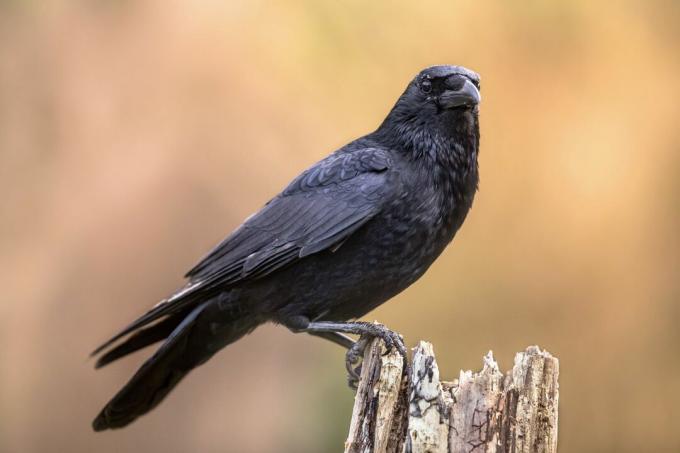
The Carrion Crow (Corvus corone) is probably the best-known crow relative. Their deep black plumage and hoarse calls make them appear 'ominous' in the eyes of many people. Carrion crows are extremely intelligent animals that can differentiate between their peers and can even remember different human faces. Everything else you need to know about the imposing birds, like you the kind of other crow relatives You can find out in our large garden how you can support them in your own garden Carrion Crow Wanted Poster.
"Contents"
-
Carrion Crow: Wanted Poster
- How to recognize the carrion crow
- How does the carrion crow song sound?
- How do you recognize a carrion crow fledgling?
- What do carrion crow eggs look like?
- How do carrion crows and rooks differ?
- Which habitat does the carrion crow prefer?
- Where does the carrion crow build its nest?
- When is the carrion crow breeding season?
- Where does the carrion crow spend the winter?
-
Support the carrion crows in the garden: That's how it works
- What do carrion crows eat?
- Are nesting aids suitable for carrion crows?
- How can you support the carrion crow?
Carrion Crow: Wanted Poster
| size | Approximately 44 - 51 cm |
| Weight | Approximately 400 - 700g |
| breeding season | April May |
| lifespan | About 15 years |
| habitat | Open and semi-open landscapes, parks and gardens |
| food | Omnivores: insects and other small animals, carrion, seeds, nuts, etc. |
| threats | Decrease in natural habitat, displacement by humans |
How to recognize the carrion crow
The carrion crow is a very imposing bird. With a length of about 50 centimeters and a deep black, shiny plumage, it looks very impressive up close. And since carrion crows are considered cultural followers and spend a lot of time close to humans, they are not afraid to approach to within a few meters. They then often observe people very attentively through their intelligent eyes.
Male and female carrion crows are colored the same and cannot be distinguished visually.
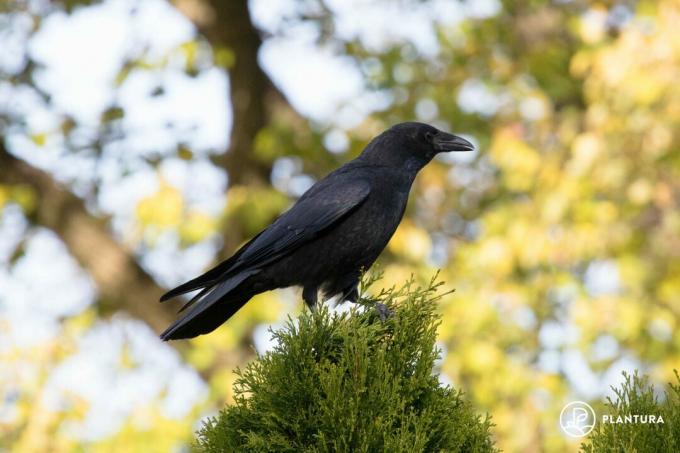
How does the carrion crow song sound?
The song of the carrion crow can only rarely be heard. It consists of a restless, garrulous whistle. Much more common and characteristic, however, is the call of the carrion crow, which roars through the landscape like a deep 'Graaah'.
The call of the carrion crow sounds like this:
How do you recognize a carrion crow fledgling?
Young carrion crows still lack the elegance of their parents. Their plumage is somewhat brownish and dull - it lacks the iridescent luster of the adult animals. In addition, the young animals have bright blue eyes, which contrast with their dark plumage and only change to brown over time.
What do carrion crow eggs look like?
Female carrion crows lay between three and six greenish to bluish, darkly speckled eggs that are about 4 centimeters in size. The eggs are laid in a very elaborate, cup-shaped nest formed from layers of small twigs, stalks, and clay. The nest cavity is carefully padded with hair and feathers.

How do carrion crows and rooks differ?
carrion crows and rooks are sometimes not differentiated and are simply summarized under the term 'crow'. These are two completely different types. So the next time you see a crow, take a good look at the beak. Rooks have an unfeathered beak base, which makes the beak appear light and extremely large. Carrion crows, on the other hand, have a black feathered beak base.

Notice: In addition to the rook, there are two other species that are quite similar to the carrion crow. This includes the hooded crow, which, however, hardly coincides with the carrion crow in its distribution, but is native to Eastern Europe and parts of Northern and Southern Europe. The hooded crow is also characterized by a high-contrast, grey-black plumage.
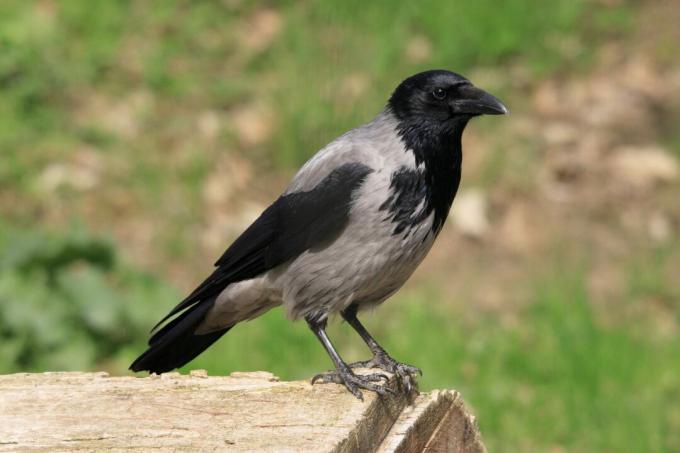
There is also a high risk of confusion with the ravens, which also has all black feathers, but is much rarer than the carrion crow and is characterized by its larger stature and strong, curved beak.
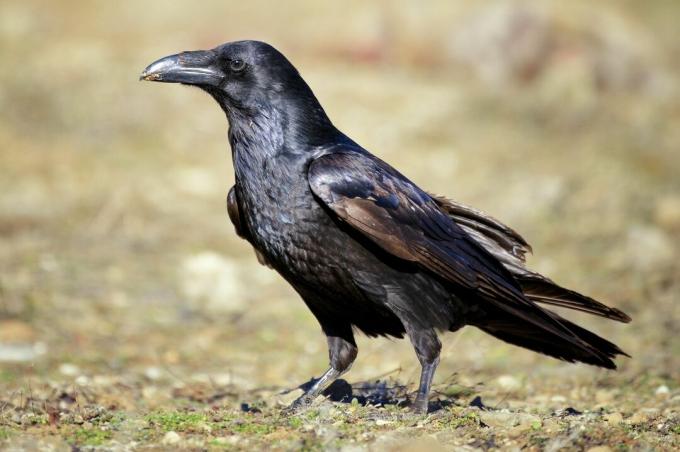
Which habitat does the carrion crow prefer?
Carrion crows are very diverse when it comes to choosing their habitat. They prefer to use open and semi-open landscapes with individual structures such as groups of trees, hedges or small patches of forest. And the intelligent birds also feel at home in human settlements, in parks and gardens and also in larger cities. Dense forests, on the other hand, are avoided.
Where does the carrion crow build its nest?
Carrion crows are free breeders and build an open nest in tall trees. The nest is built with a lot of care and is extremely stable. Despite this, old nests are rarely reused and the birds build a new nest the next year. However, the abandoned nests are often taken over by other bird species, such as long-eared owls or kestrels.
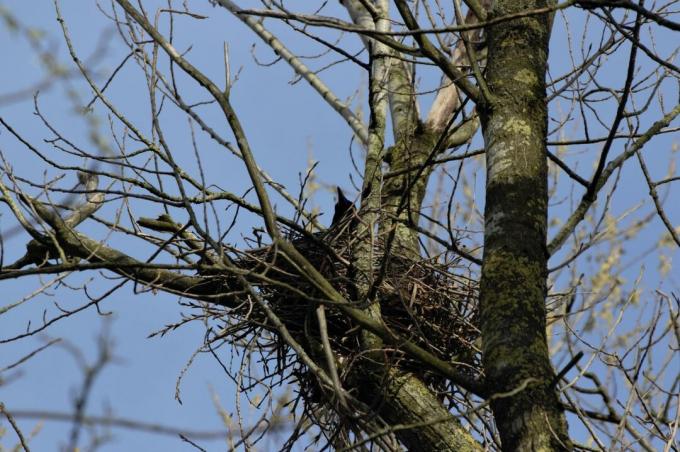
When is the carrion crow breeding season?
The breeding season of carrion crows is quite short, lasting from April to May. During this time, the birds usually create only one brood. The female incubates the eggs for about 20 days, during which time the male provides her with food and defends her against invaders. After hatching, the young remain in the nest and are fed by their parents for up to 30 days before attempting to fly.
Notice: Young carrion crows from the previous year can sometimes be seen helping their parents raise their younger siblings.
Where does the carrion crow spend the winter?
carrion crows are sedentary birds. They spend the whole year in their breeding grounds, roaming the barren landscape in search of food. Corvids can also be observed in gardens and at feeding stations during this time, where they sometimes aggressively defend the food against other birds.

Support the carrion crows in the garden: That's how it works
You can also watch carrion crows in your own garden. Here you can find out what food the magnificent animals like to eat and how you can support carrion crows.
What do carrion crows eat?
Carrion crows are real omnivores. In the summer months they feed mainly on insects and other small animals. In winter, they then switch to more plant-based food, such as walnuts, berries and seeds. They also use carrion and thus make an important contribution to the ecosystem. Even animals that have been killed on the road are 'disposed of' by the birds.
At feeding sites, carrion crows prefer larger seeds or nuts. Our Plantura sunflower seeds for example, are perfect as an energy supplement in the cold winter months. The fatty seeds also provide important vitamins and are enriched with extra iodine and honey.
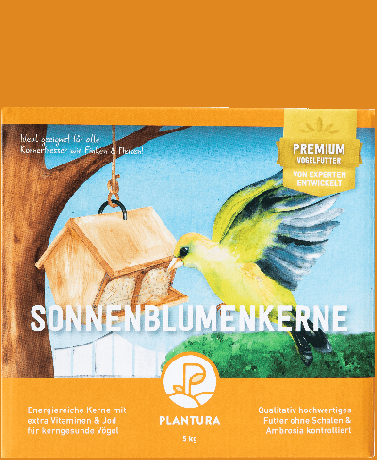
Plantura sunflower seeds for wild birds
Peeled sunflower seeds
with extra honey, vitamins & iodine,
for winter feeding of wild birds
Notice: Carrion crows can be very dominant at feeding sites. It is therefore advisable to offer a second, more sheltered spot, for example in a tree, in addition to a clearly visible, free-standing feeding place. Small songbirds can also help themselves there undisturbed.

Are nesting aids suitable for carrion crows?
Since carrion crows are free breeders, classic nesting boxes are out of the question for them. These are more for cave breeders, such as jackdaws or great tits, thought. However, if you have tall trees in your garden, you can certainly count on a colonization of carrion crows. However, always be careful not to thin out such trees too much, as dense vegetation helps protect free-standing nests.
How can you support the carrion crow?
Carrion crows have long been considered agricultural pests and are actively pursued and repelled by humans. Even in your own garden, the crows are often not welcomed because they are considered nest robbers and plunderers that endanger smaller songbirds. However, it is part of the nature of large birds to obtain food in many different and sometimes ingenious ways. And this behavior does not harm the songbirds in the long term. On the other hand, they have much bigger problems because of us humans who monotonize landscapes, gardens seal and poison insects and thereby slowly but surely the livelihood of the songbirds revoke.
A little open-mindedness and respect for the intelligent corvids can hopefully help put the birds in a better light again.
Another species of bird in the crow family that has long been considered a thieving bringer of bad luck is the crow magpie. But conventional prejudices can also be refuted when it comes to the magpie. Get to know this garden bird a little better in our next species portrait.
...and receive concentrated plant knowledge and inspiration directly in your e-mail inbox every Sunday!
